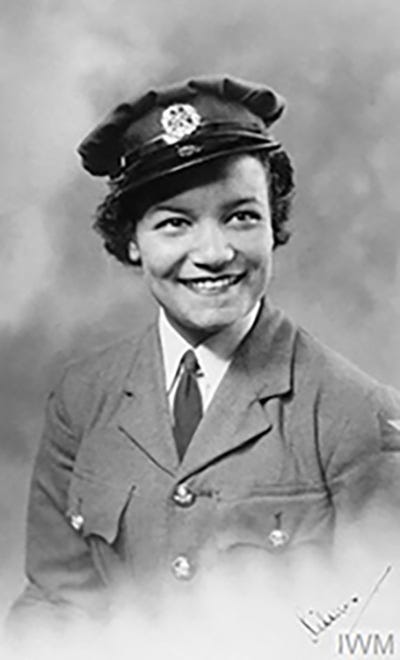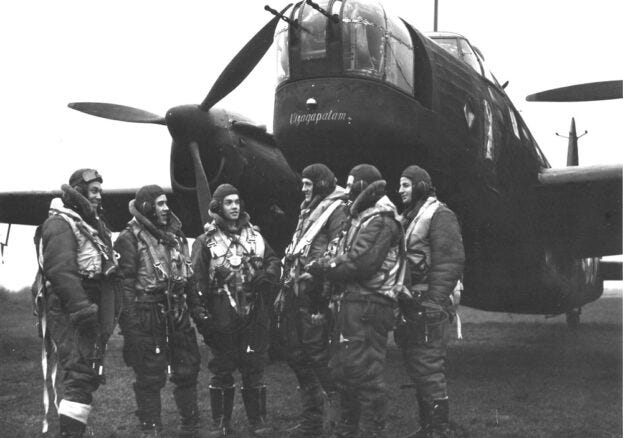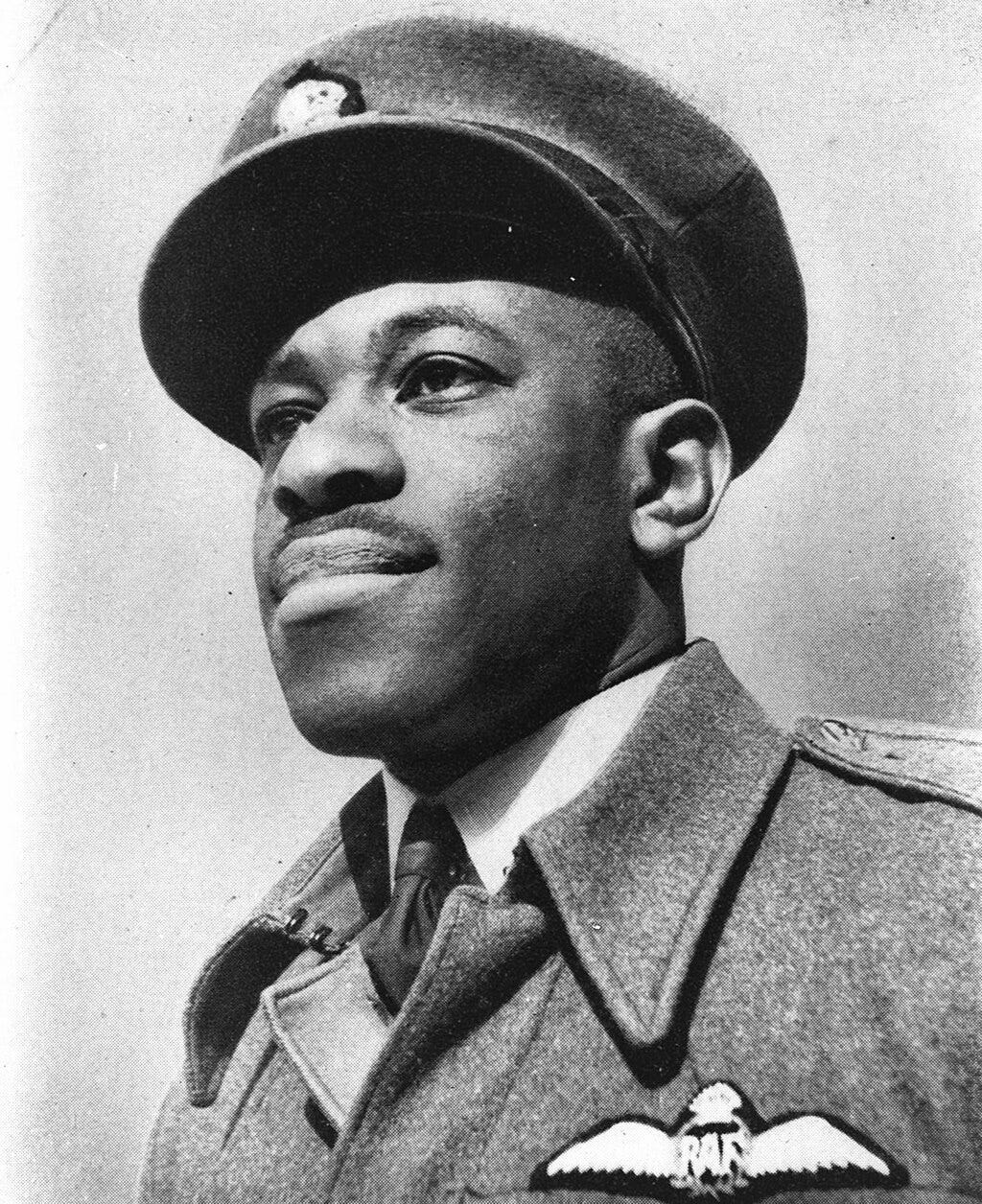This past week has seen celebrations of the achievements and sacrifices of British soldiers who served in the Armed Forces, and who were instrumental in securing VE Day on 8 May 1945.
Black British soldiers, from the UK, the Caribbean, Africa, and Asia were among those who bravely served in World War II as members of British and other Colonial regiments.
Some have made national, and international, headlines following decades of dedicated research, others remain quiet heroes to their family, friends, and their country of origin.
For example, Corporal Edgar Norman Escoffery, born on 10 September 1916 in Jamaica.
I had the honour to talk with him about his life and experiences as part of an oral history project capturing the stories of the Windrush elders in Liverpool in 2018.
He was 102 when I spoke with him, here are some of his stories, including his time in the military when he served in the British Caribbean Regiment for King and country in Italy and Egypt.
Edgar Escoffery was a member of the Caribbean Regiment that was formed in April 1944, and comprised of approximately 4,000 volunteers from across the British West Indies and Bermuda. This company was formed after long discussions and some initial resistance from the War Office to the idea of a dedicated West Indian regiment.
The Caribbean Regiment saw service in Italy, Egypt, and Palestine. In Italy, they were primarily employed in general duties behind the front line, and in Egypt, they were used in mine clearance work around the Suez Canal area.
Before the creation the Carribbean Regiment, many West Indians had already enlisted in various other units of the British Army; by May 1942, they could be found serving in over 40 different regiments, with a significant number in the Royal Engineers, utilising their valuable skills such as mechanical engineering.
In total, nearly 10,000 British Caribbeans travelled to the UK to join the army. The creation of the Caribbean Regiment in the later stages of the war signifies a shift towards greater formal inclusion of colonial troops, although their deployment in support roles reflects the prevailing racial and political considerations.

I also visited Lilian Bader (1918 - 2015) in her home in Bournemouth in 2005 (for the Northamptonshire Black History Project), to discuss her work in WWII and her connection to Northamptonshire.
(Interestingly, Lilian Bader was born in Liverpool, not far from where I now live.)
On 28 March 1941 Lilian Bader became one of the first women to serve in the military in England, and to work in the WAAF (Women’s Auxillary Air Force) as an acting Corporal.
Her contributions to the war effort are now documented in many places including in my work supported by Heart of Glass and Arts Council England. Corproal Lilian Bader was a member of a family with a history of three generations that served in the British Military Forces.
Below is a link to a brief insight into her life and experiences.
https://www.heartofglass.org.uk/news-and-resources/resources/the-talk-learning-resource
Sharing The Past - Northamptonshire Black History, 2005
Black British History: Selected Studies - Northamptonshire Black History, 2010
Britain recruited thousands of colonial subjects from Africa and the Caribbean during World War II. Many volunteered out of a sense of duty to the "mother country," despite facing racial discrimination both in the military and civilian life. Black servicemen were often restricted to support roles rather than combat positions, especially early in the war, though this policy relaxed somewhat as the conflict progressed.
The contributions of Black British soldiers remained largely unrecognised until recent decades, when historians and community organisations began documenting their stories through uncovered records and oral histories.
Organisations like the West Indian Association of Service Personnel (WASP) have worked to preserve the legacy of these servicemen and women.
Here are a few others to remember this VE Day 80:
Sergeant Sidney Cornell (1914 - 1945)
Cornell was born in Portsmouth to an African American father. He was a paratrooper who served as a company runner with B Company, 7th (Light Infantry) Parachute Battalion, and who earned distinction for his bravery, particularly during the Normandy campaign (D-Day landings on 5th/6th June 1944). As a part of his role as a company runner, he delivered vital messages while under constant enemy fire. Cornell was wounded multiple times but continued to serve. His Distinguished Conduct Medal (DCM) citation, awarded in February 1945, highlights his sustained courage in carrying messages through heavy enemy fire in the Normandy campaign. Tragically, Cornell was killed in action in Neustadt, Germany on April 7, 1945 during Operation Varsity, just one month before the end of the war in Europe, when a bridge his battalion was crossing was blown up; he is believed to be one of the first Black soldiers to land in France on D-Day.
https://www.bbc.co.uk/news/articles/cze36r4n4dro
Squadron Leader Ulric Cross (1917 -2013)
A Trinidadian, Ulric Cross joined the RAF in 1941 and he served with distinction as a navigator in Bomber Command, eventually attaining the rank of Squadron Leader. His exceptional service earned him both the Distinguished Service Order (DSO) and the Distinguished Flying Cross (DFC). Cross was part of 139 (Jamaica) Squadron, a unit named to acknowledge the financial contributions from the people of Jamaica towards its bombers, and later was selected for the elite Pathfinder Force, tasked with the dangerous job of precisely marking targets for bombing raids. By the end of the war, he had completed an impressive 80 missions and is thought to have been the most decorated Caribbean airman of World War II.
The complete film is available here for UK viewers: https://www.bbc.co.uk/iplayer/episode/m001n4rs/hero-the-extraordinary-life-of-mr-ulric-cross (1hr 47m)
Cy Grant (1919 - 2010)
Cyril 'Cy' Grant from British Guiana joined the RAF in 1941, where he trained as a navigator and was eventually commissioned as an officer. In 1943, he was posted to No. 103 Squadron, which operated Lancaster bombers. His flying career was curtailed when his aircraft was shot down over the Ruhr on his third mission, leading to his capture and subsequent experience as a prisoner of war. After the war, he remained in Britain and later published a memoir titled 'A Member of the RAF of Indeterminate Race', the title itself a direct reference to the caption that appeared under his photograph in a German newspaper following his capture.
Billy Strachan (1921 - 1998)
Billy Strachan, a British citizen from Jamaica, like many other Caribbean men and women, faced an uphill battle to enlist in the British military. Initially rejected buffed at the British Army camp in Jamaica, he was told to find his own way to Britain. Determined to serve, Strachan sold his bicycle and saxophone to pay for his passage to the UK, and eventually reached the Air Ministry in London to volunteer for the RAF. Strachan went on to serve with distinction as both an Air Gunner and a pilot for Bomber Command. He was a member of the only crew of 99 Bomber Squadron to complete a full tour of 30 operations alive. Later in the war, he was selected to become a pilot in 156 Squadron, an elite unit within the Pathfinder Force. Despite his significant contributions and survival in a highly dangerous role, Strachan, like many other Black servicemen, felt a sense of neglect in the post-war years. His perseverance in enlisting despite initial obstacles and his subsequent success in demanding roles within the RAF demonstrate remarkable personal commitment. His later feelings of being unwanted reflect a potential broader issue of inadequate recognition for Black veterans.
Flight Lieutenant Emanuel Peter John Adeniyi Thomas (1914 - 1945)
Emanuel Peter John Adeniyi Thomas, known as Peter or "Deniyi," achieved the distinction of becoming the first West African to be commissioned as an officer in the Royal Air Force. Born into a wealthy family in Lagos, his decision to volunteer for the RAF was motivated by a sense of global responsibility in the face of rising fascism. By September 1942, at the age of 25, he had qualified as a pilot. His skill and bravery led to further promotions, reaching the rank of Flight Lieutenant by September 1944. In January 1945, he was serving with the RAF's No. 4 Radio School at RAF Madley, where his role involved training new wireless operators during airborne sessions. Thomas’ life was tragically cut short in January 1945 when the plane he was piloting crashed in bad weather. Thomas’ background and motivations provide insight into the diverse individuals who volunteered from across the Empire.
It is important to know that many Black soldiers served in segregated or colonial units, which were integral to the British war effort:
For more information see these Key Archival and Research Sources:
The National Archives (UK), Kew: This is the official repository for British government and military records, including service records for individual soldiers (though access can be restricted for privacy reasons for more recent records or those of individuals without direct descendants applying). War diaries of specific units can also provide information.
Imperial War Museums (IWM): The IWM holds extensive collections, including photographs, oral histories, and documents related to the experiences of soldiers from across the Commonwealth.
Specialist Historical Works and Databases: Books by historians like Stephen Bourne (“Black Poppies”), David Killingray (“Fighting for Britain: African Soldiers in the Second World War” - focuses on African soldiers but relevant context), and Marika Sherwood have been crucial in uncovering these histories. Online resources and databases dedicated to Black British history, such as “The Black Presence in Britain” and efforts by the Nubian Jak Community Trust (which established the African and Caribbean War Memorial), can also be valuable.
Regimental Museums and Archives: Museums and archives specific to regiments like the Parachute Regiment may hold records and histories that include Black soldiers who served within their ranks.
The legacy of the Black men and women from all over the British Commonwealth who served in WWII and ensured VE Day 80 years ago will remain if we share their histories, and celebrate their contributions.
Further Reading List / Links
Bourne, Stephen. “Mother Country: Britain's Black Community on the Home Front 1939-45.” The History Press, 2010.
Bourne, Stephen. “Motherland Calls: Britain's Black Servicemen & Women, 1939–45”. The History Press, 2012. pp. IV–V.
Costello, Ray. “Black Tommies: British Soldiers of African Descent in the First World War.” Liverpool University Press, 2015.
Killingray, David. “Fighting for Britain: African Soldiers in the Second World War.” James Currey, 2010.
Olusoga, David. “Black and British: A Forgotten History.” Pan Macmillan, 2016.
Sherwood, Marika. “Many Struggles: West Indian Workers and Service Personnel in Britain (1939-45).” Karia Press, 1985.
Sherwood, Marika. “Colonies, Colonials and World War II.” Research Paper, Institute of Commonwealth Studies, 2011.
Smith, Richard. “Caribbean Volunteers at War.” Pen & Sword Military, 2012.
Sharing The Past - Northamptonshire Black History, 2005
Black British History: Selected Studies - Northamptonshire Black History, 2010
https://www.cwgc.org/our-work/blog/black-stories-from-world-war-two-you-might-not-know/
https://www.bbc.co.uk/iplayer/episode/m001n4rs/hero-the-extraordinary-life-of-mr-ulric-cross
https://www.bbc.co.uk/news/articles/cze36r4n4dro
https://www.heartofglass.org.uk/news-and-resources/resources/the-talk-learning-resource
https://www.theguardian.com/commentisfree/2025/may/08/ve-day-second-world-war-soldiers-india-africa-caribbean-colonial - Guardian Opinion by Gary Younge









You met a couple of them, wow!! That must've been a moving experience, Marjorie.
Quite a few Guyanese fought in WW2, and there were doctors too. One of my mum's teachers, Teacher Hamilton was a soldier. The father of a relative was in the RAF.
Every day is a school day.
Thanks for this piece. It has enriched my mind. ☺️
I wish more of this information was in our schools and universities.
Will go through all the links later..